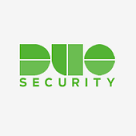Small business owners and operators often believe they are less of a target for cyber crime than a large multinational company would be. However, this is a fallacy – one that may have severe consequences if the small business chooses to ignore establishing a reasonable security posture.
Small business is a target due to the simple fact that most criminal actors don’t distinguish their targets. Instead, they opt to target as many potential victims as possible, maximizing the number of compromises in their criminal portfolio.
However, this doesn’t mean a small business needs a large budget to improve their security posture – quite the contrary. Organizations of all sizes often neglect to take some the most basic steps toward operating securely. It is possible to address most of today’s common threats with a few basic steps. Though every organization is different, these steps outline a reasonably simple baseline of actions anyone can implement without significantly disrupting their business rhythm and workflow.
Upgrade your authentication
Passwords are going to be around a while. There are many shortfalls with using passwords as the sole means of securing accounts, but a few quick steps can overcome most of them. First, use extremely strong passwords. Eight characters with number/letter/upper/lower/special character doesn’t cut it any more. Use a random string of 30+ characters and don’t reuse those passwords. Obviously, that’s not something you can remember, so the next step is to use password management software. I personally use 1Password, but there are several others including LastPass and KeePass.

Use a separate system for sensitive tasks

This could mean a fully separate computer system such as an inexpensive laptop or an> operating system installed to a bootable USB device that gives you segregation between day-to-day business functions and more sensitive tasks. Never cross-contaminate these tasks between their designated platform. This separation is a simple and often inexpensive investment that provides a huge barrier to malicious actors’ attempts to access to your sensitive information.
Know and manage data access
If you don’t know who can access the personnel files on your server or a standalone office computer, assume everyone has access. You wouldn’t leave sensitive paper documents out on the table for everyone to see and their electronic equivalents should be controlled as well. This means implementing and auditing proper access controls on the files and devices that contain sensitive business data such as personnel records, financial documents, customer lists, supplier pricing, customer data records, and more. Any employee’s errant click on a website could cause all of the information they can access to be at risk. Minimize the information an individual can access and you’ll minimize the risk of it being compromised.
This step could be accomplished in several different ways – whether using the dedicated system approach from above, or by implementing user account restrictions on different shares on a file server, for example.
Activate full-disk encryption

Systems running Apple’s OS X operating system can use the FileVault 2 feature and Microsoft Windows users can use the Bitlocker utility to accomplish this. There are several Linux options, depending on the specific distribution.
Establish and test backups
The worst time to learn you don’t have viable backups is when you’ve lost data. Be sure to implement a backup solution that covers your most critical data and test it on a regular schedule.
These may be onsite and/or offsite solutions. Onsite backup (such as Apple’s Time Machine, Microsoft Windows’ Backup and Restore feature, or various third party software titles) uses a storage device within your environment to store backups and can provide quick restoral of even large files. Offsite solutions (including CrashPlan, Carbonite, and many others) use Internet-based storage platforms. Offsite solutions mitigate the more serious data risks such as theft, fire, or flood, but require more time to restore.
Regardless, ensure your chosen backups are encrypted to avoid unwanted exposure. Periodically test the restore process for each backup solution to prevent any unpleasant surprises when the process really matters.
Don’t ignore mobile devices

Prepare to investigate

Get started
These steps will go a long way toward minimizing the cost and business impact of a data breach, and also set the organization on a trajectory to a proper security posture. Small businesses actually enjoy a distinct advantage in this regard. While businesses of every size are targets, small businesses are able to implement these measures far more quickly than large companies.
By undertaking these basic steps, you will greatly improve your odds in the increasingly hostile connected world.